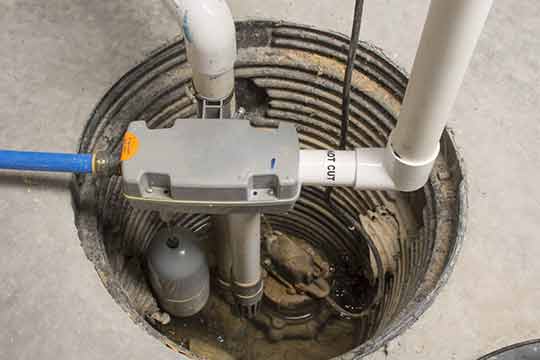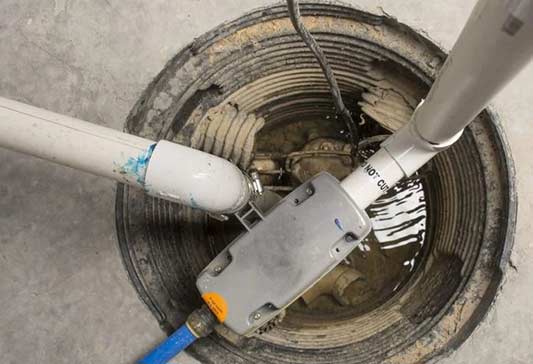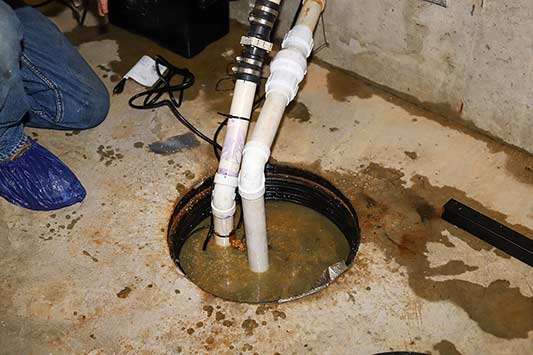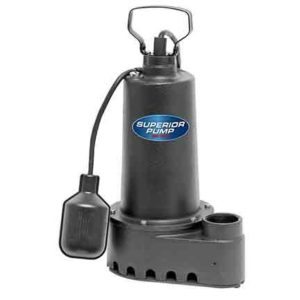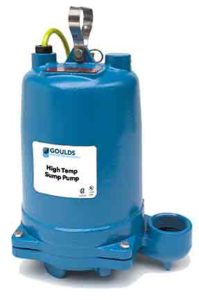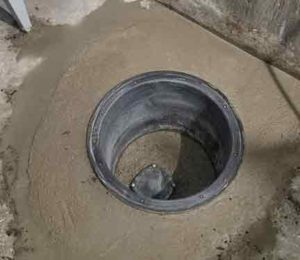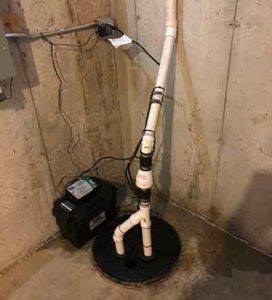Understanding the Integral Role of Sump Pumps in Modern Water Management Systems
Sump pumps are indispensable in the realm of water management, particularly for residential and commercial properties located in flood-prone areas or regions with high water tables. These devices serve as the first line of defense against basement flooding, effectively safeguarding the structural integrity of buildings. By efficiently removing excess water from basements and crawl spaces, sump pumps prevent water damage, inhibit mold growth, and avert other moisture-related issues that could compromise the safety and comfort of a living or working environment.
The importance of sump pumps extends beyond individual properties, playing a critical role in broader water management systems. In urban planning, sump pumps help manage stormwater runoff, thus reducing the burden on municipal drainage systems. This function is especially crucial in preventing urban flooding, which can lead to significant economic losses and infrastructure damage. Therefore, understanding the pivotal role of sump pumps in water management systems is essential for homeowners, property managers, and urban planners alike.
Comprehensive Overview of Key Components in a Sump Pump System
A sump pump system comprises several vital components, each playing a specific role in ensuring efficient water management. The primary components include the sump pit, the pump itself, discharge pipes, and a check valve. A detailed understanding of these components is crucial for effective maintenance and repair.
The sump pit, typically a basin constructed of concrete, plastic, or fiberglass, collects water that needs to be pumped out. It is strategically located at the lowest point of a basement or crawl space to facilitate optimal water collection. The pump, which can be submersible or pedestal, is the heart of the system, tasked with moving water from the pit to a designated drainage area outside the building. Discharge pipes are responsible for transporting the water away from the property, ensuring that it does not return to the sump pit or cause flooding elsewhere. The check valve, an often overlooked yet critical component, prevents backflow, ensuring that water does not re-enter the sump pit once it has been pumped out.
Understanding these components and their interactions is essential for maintaining the system’s efficiency and longevity. Regular inspections and maintenance of each component can prevent malfunctions and extend the life of the sump pump system.
Implementing Routine Maintenance Practices for Optimal Sump Pump Performance
Regular maintenance is paramount to the efficient operation of sump pumps, ensuring they are ready to handle any water influx. Homeowners should adopt a proactive approach to maintenance, incorporating routine checks into their home care regimen.
Begin by inspecting the power source to ensure the pump is plugged into a functioning Ground Fault Circuit Interrupter (GFCI) outlet. This step is crucial for preventing electrical hazards and ensuring the pump has a reliable power supply. Next, examine the power cord for signs of wear or damage, replacing it if necessary to prevent electrical failures.
Testing the pump is another essential maintenance task. This can be done by pouring water into the sump pit until the float triggers the pump to turn on. This test verifies the pump’s operational readiness and its ability to handle water effectively. Additionally, cleaning the sump pump area of debris and sediment is vital to prevent clogs and maintain the pump’s efficiency. Debris accumulation can impede the pump’s operation, leading to potential malfunctions and water damage.
By incorporating these routine maintenance practices, homeowners can ensure their sump pumps operate at peak efficiency, providing reliable protection against water damage.
Identifying and Addressing Common Sump Pump Problems
Despite diligent maintenance, sump pumps may encounter issues that require prompt attention. Common problems include power failures, stuck switches, and clogged discharge lines. Early identification and resolution of these issues are crucial to preventing more severe damage and ensuring the sump pump continues to function effectively.
Power failures are a common issue, particularly during storms when the pump is needed most. To mitigate this risk, consider installing a backup power source, such as a battery backup or a generator. These systems can provide power during outages, ensuring the pump remains operational when it is needed most.
Stuck switches, often caused by debris or improper installation, can prevent the pump from turning on or off as needed. Regular cleaning and inspection can help prevent this issue. If a switch becomes stuck, cleaning the pump and its components or adjusting the installation may resolve the problem.
Clogged discharge lines can impede water flow, leading to potential flooding. Regularly inspect and clear discharge lines of debris to ensure proper water flow. In some cases, replacing damaged or obstructed pipes may be necessary to restore the system’s functionality.
By recognizing and addressing these common issues, homeowners can ensure their sump pumps operate efficiently and reliably, providing peace of mind and protection against water damage.

Plumbers can provide valuable advice on upgrades and improvements, such as optimizing drainage systems or recommending high-quality replacement parts.
Systematic Steps to Repair a Malfunctioning Sump Pump
Repairing a malfunctioning sump pump requires a methodical approach to diagnose and address the issue. Begin by unplugging the pump to ensure safety during the inspection process. Carefully examine the pump for visible damage or blockages, paying particular attention to the float switch, which should move freely and without obstruction.
If the pump fails to operate, verify the power supply, ensuring the circuit breaker has not tripped. This step is crucial for ruling out electrical issues as the cause of the malfunction. Inspect the check valve for proper operation, replacing it if necessary to prevent backflow and ensure efficient water removal.
In cases where the pump motor has burned out, it may be more cost-effective to replace the entire unit rather than attempting repairs. However, before making this decision, speak with a plumber to determine the most appropriate course of action. Their expertise can provide valuable insights into the cost-effectiveness of repair versus replacement.
By following these systematic steps, homeowners can effectively diagnose and repair sump pump issues, ensuring the system remains operational and reliable.
Strategies for Enhancing Sump Pump Reliability and Longevity
To enhance the reliability and longevity of a sump pump, consider implementing additional protective measures. Installing a sump pump alarm can alert homeowners to potential issues, such as high water levels or pump malfunctions, allowing for prompt intervention before significant damage occurs.
Regularly testing the backup power system is another critical strategy, ensuring it is ready to provide power during outages. This proactive approach can prevent power-related failures, particularly during storms when the pump is needed most.
Additionally, consider upgrading to a more robust sump pump if the current model struggles to handle the water volume. Selecting a pump with a higher horsepower or a dual-pump system can provide added security and peace of mind, particularly in areas prone to heavy rainfall or flooding.
By implementing these strategies, homeowners can enhance the reliability and longevity of their sump pumps, ensuring they remain a dependable component of their water management system.
The Critical Role of Professional Maintenance and Repair Services in Sump Pump Care
While many maintenance tasks can be performed by homeowners, licensed plumbers offer expertise and thorough inspections that can identify potential issues before they become significant problems. Hiring a plumber to conduct annual inspections and maintenance can extend the life of a sump pump and ensure optimal performance.
Plumbers can provide valuable advice on upgrades and improvements, such as optimizing drainage systems or recommending high-quality replacement parts. Their experience and knowledge make them an invaluable resource for maintaining a reliable water management system.
Moreover, plumbers can offer peace of mind, ensuring that all aspects of the sump pump system are functioning correctly and efficiently. By partnering with a trusted plumber, homeowners can ensure their sump pumps remain in top condition, providing reliable protection against water damage.
To Conclude
Maintaining and repairing sump pumps is essential for effective water management in homes and buildings. By understanding the components of a sump pump system, performing regular maintenance, and addressing issues promptly, homeowners can ensure their sump pumps operate efficiently and reliably.
Incorporating professional services and considering upgrades can further enhance the system’s performance and longevity. With proper care and attention, sump pumps can provide peace of mind and protect properties from water damage for years to come. As a critical component of modern water management systems, sump pumps offer invaluable protection against the challenges posed by excess water, ensuring the safety and integrity of residential and commercial properties alike.







